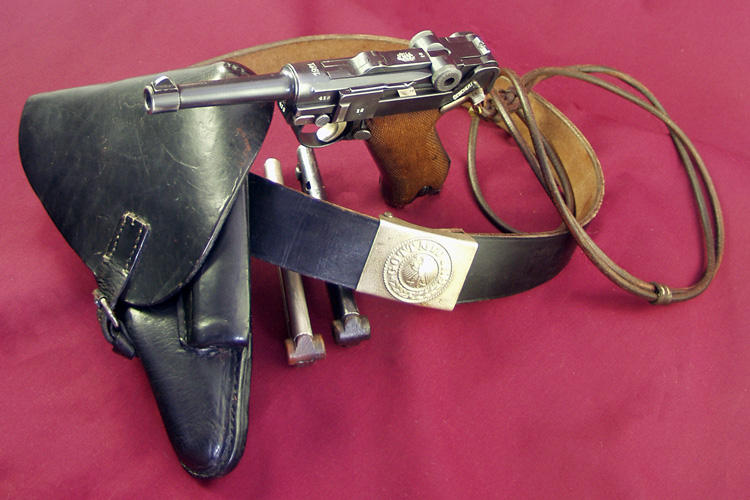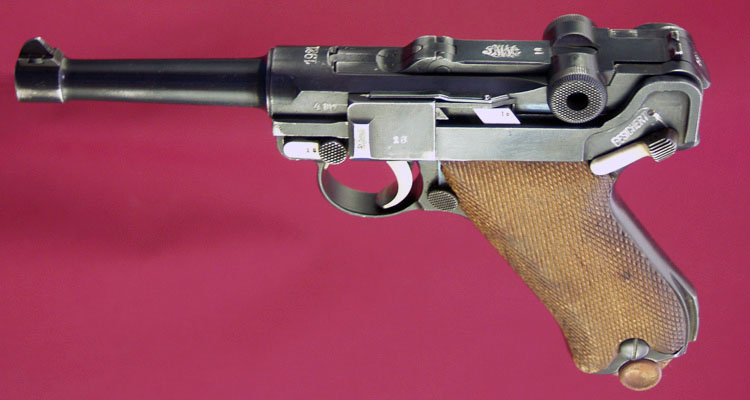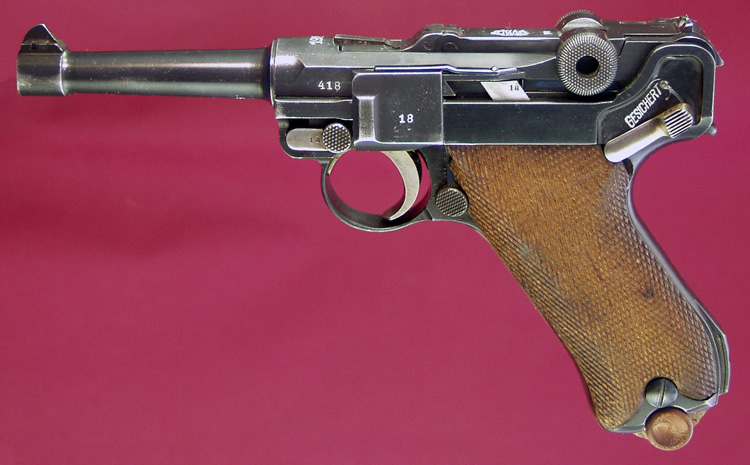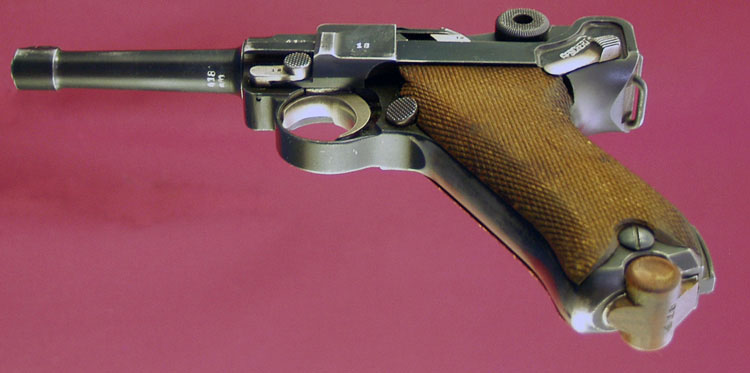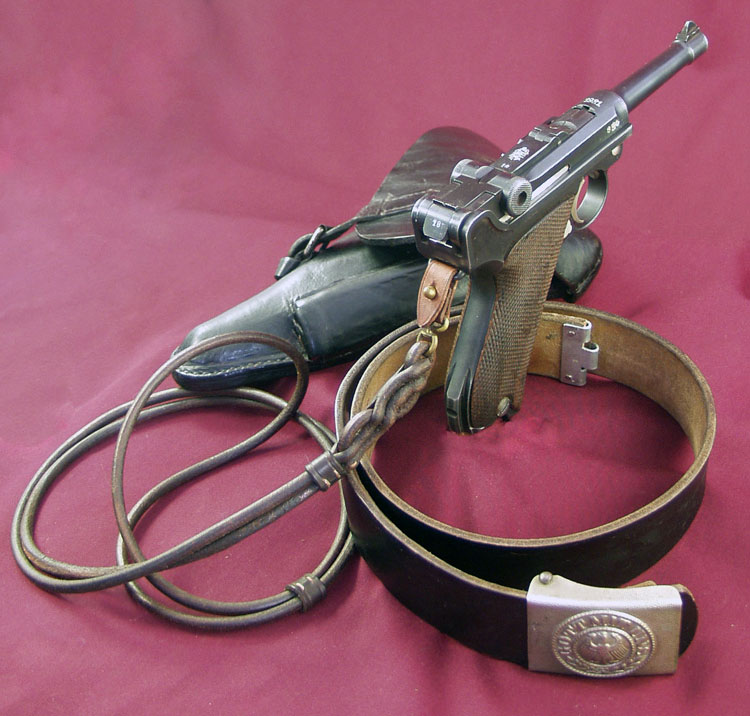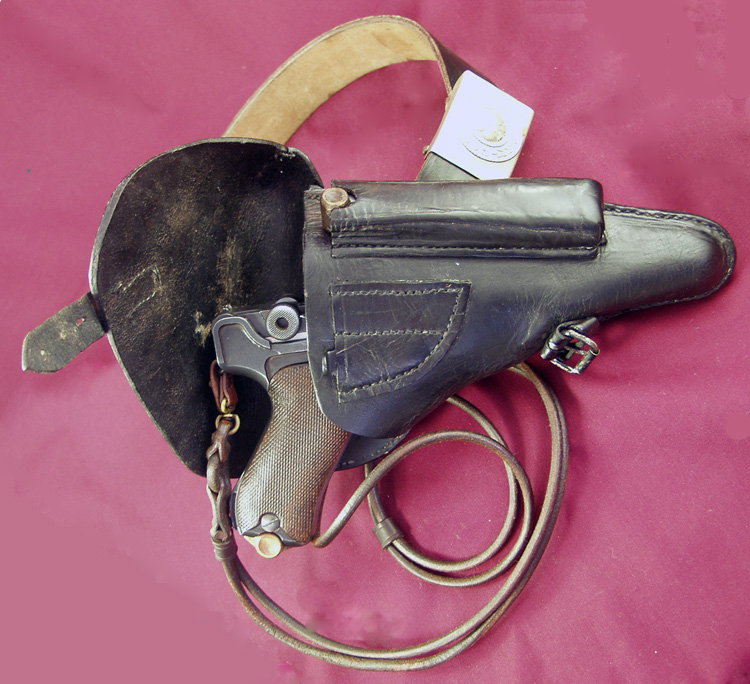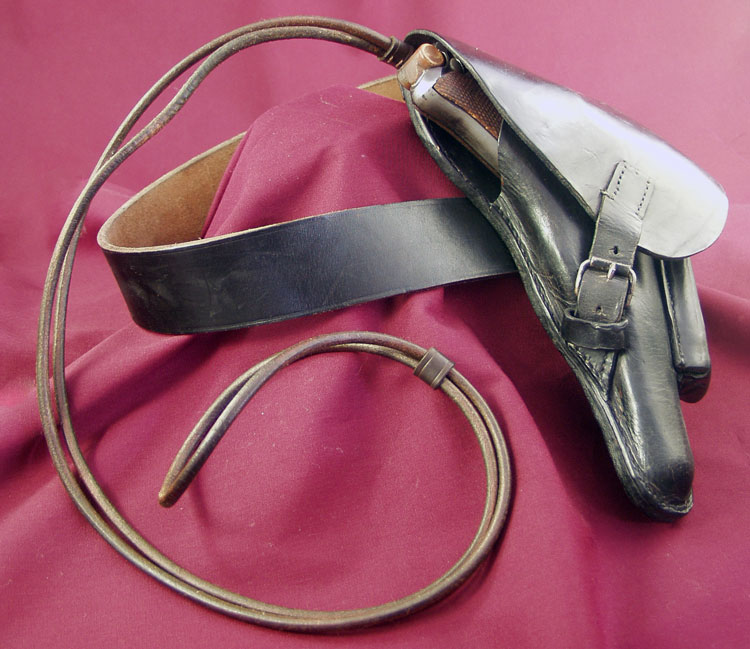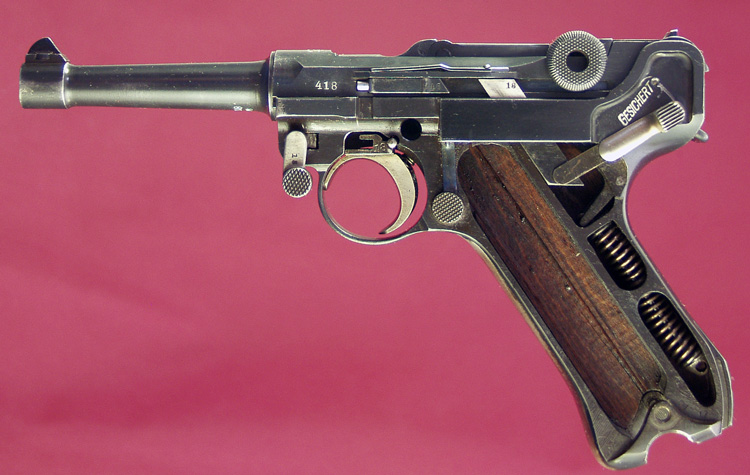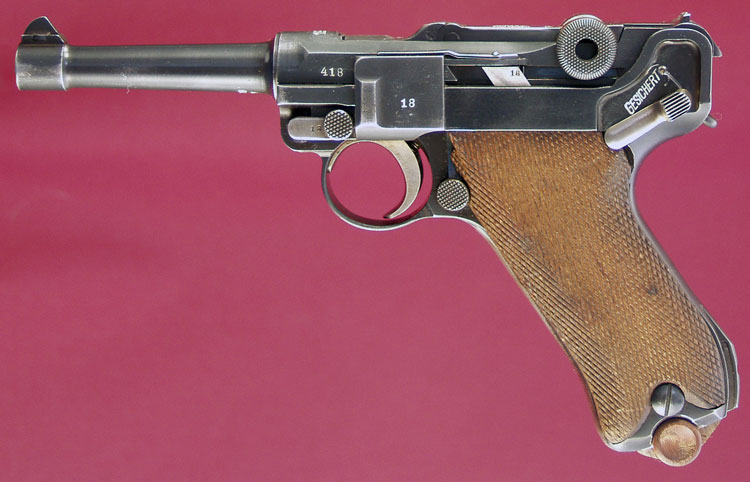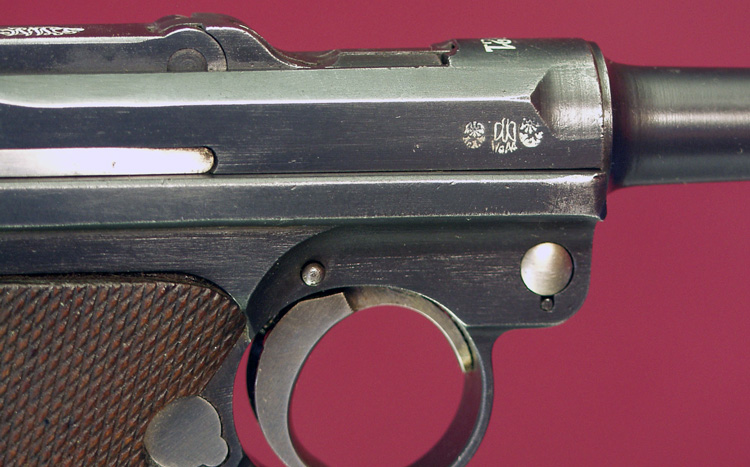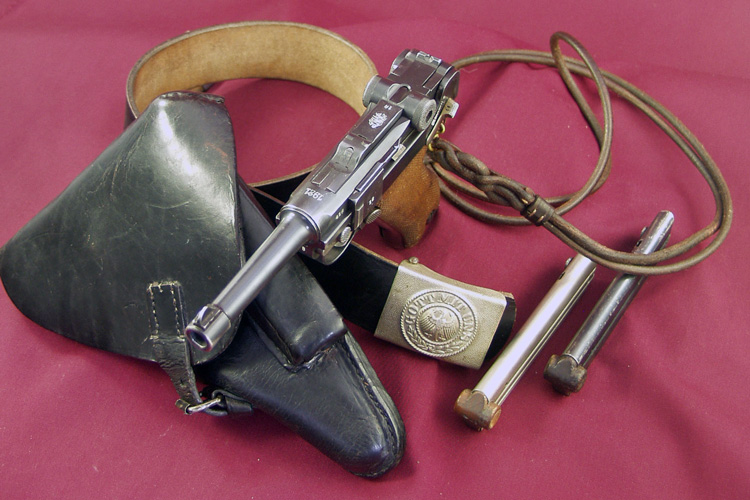|
 |
|
 |
|
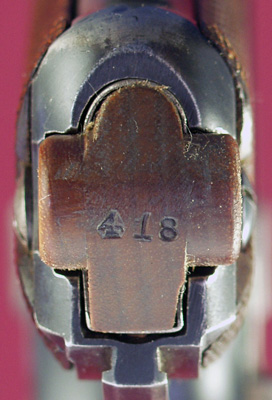 |
 |
|
The magazines are both
wooden based, both match the serial number of the gun but one is the early
DWM crimped magazine and the other is the blued steel 1920 type with a
wooden bottom. |
|
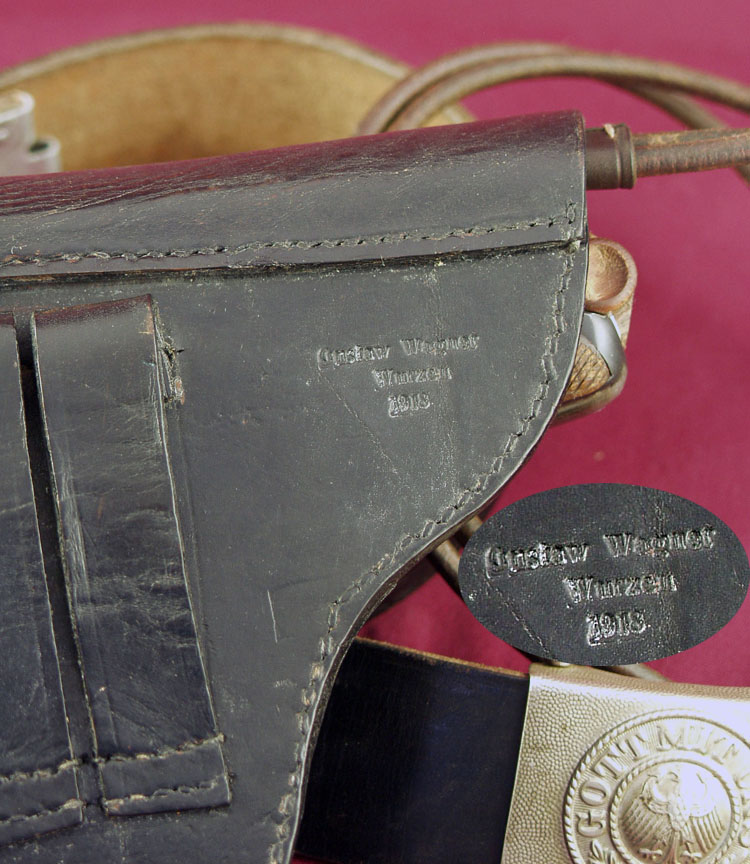 |
|
The holster presents a dichotomy for the
collector. Clearly it is marked with a manufactures cartouche (Gustaw
Wagner, Wurzen 1918). The holster is not the standard military
holster but appears made to someone's specifications with the more
narrowly placed belt loops and open rear. |
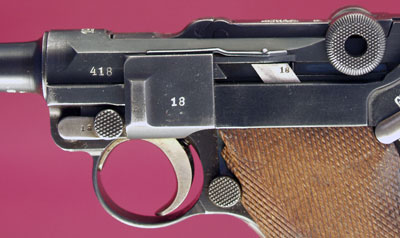
SEAR SAFETY:
In this case you can see the sear safety
probably fully installed at the original time of production. This was the
invention of Ludwig Schiwy, a gunsmith and the owner of F.W. Vandry &
Company, Berlin.
It consisted of a spring-steel bar on the
top of the trigger plate which springs down into a recess in the sear bar,
locking the mechanism, if the trigger plate was removed. |
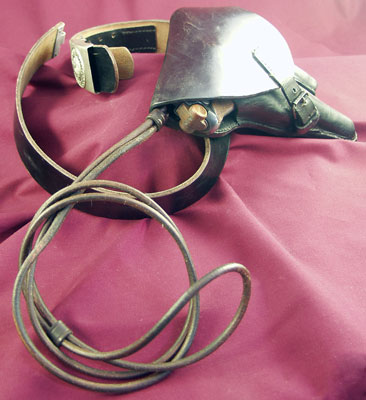 |
|
The holster was designed, with the open
rear, to enable the lanyard be utilized. This was perhaps a rig for
a mounted policeman |
|
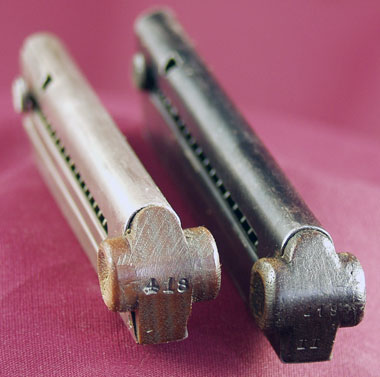 |
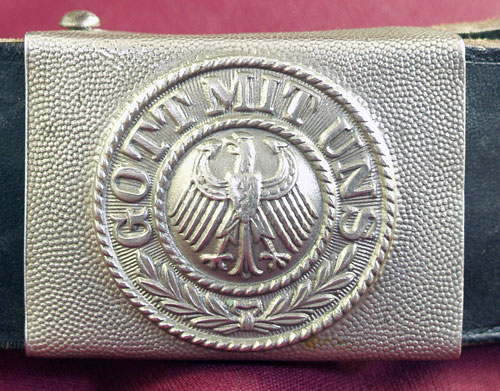 |
|
Both magazines match in serial number.
One of the magazines (the blued steel) has the Roman Numeral II for the
second magazine instead of the military plus or the later aluminum bottoms
that indicated the number in western style, 1 or 2. |
|
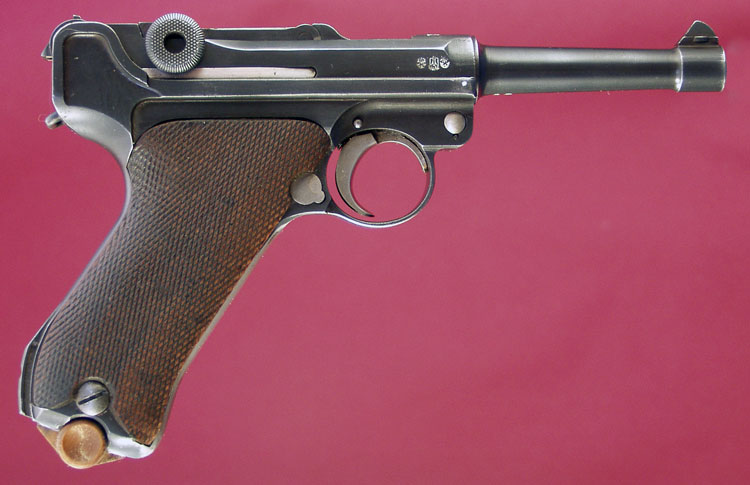 |
|
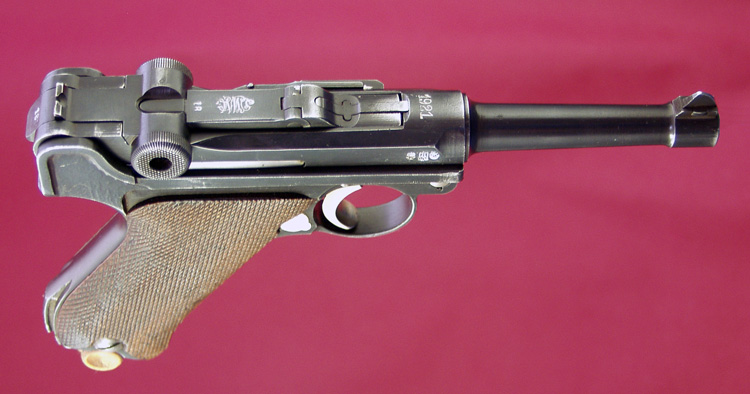 |
